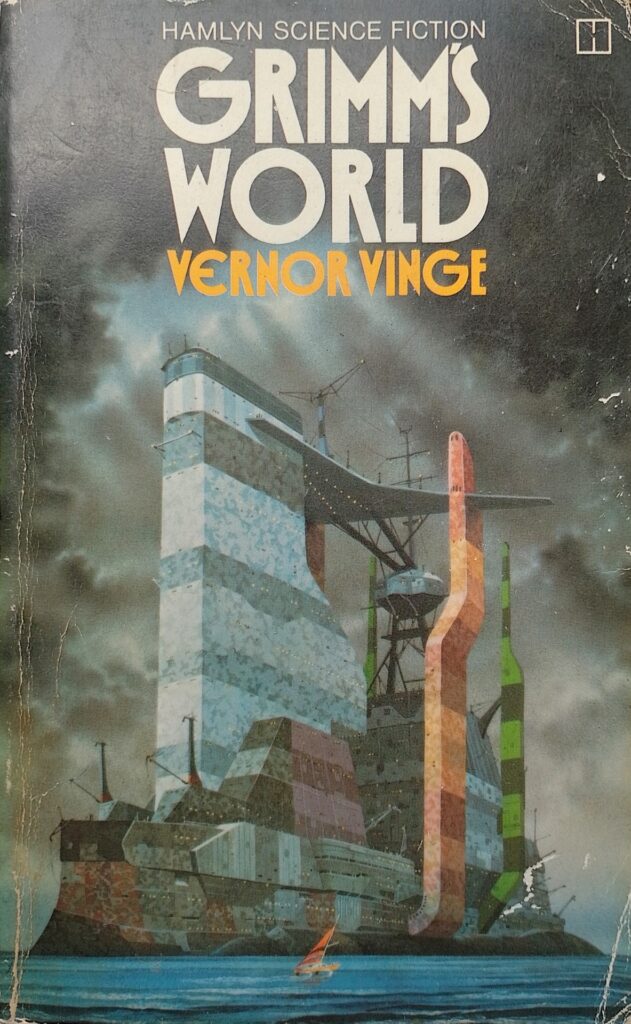First published 1969. Hamlyn paperback, 1978, pp176, c.62,000 words.
At first glance this is a straightforward science fiction ripping yarn, but underneath there is an exploration of the impact of a planet very like Earth but with very little accessible metal resources. How would technology develop under such circumstances? The development of Earth’s civilisation is defined by metals: stone gave way first to bronze and then to iron. Later, our industrial revolution was built on steel, and later, a whole host of other metals from aluminium to titanium.
On Vinge’s planet, civilisation is not far-off present-day Earth, but with much more primitive weaponry – roughly medieval but with artillery of around World War One capability made of ceramics. While the weapons may be a mixture of medieval and early twentieth century, battle tactics seem to be Napoleonic [p84]. Ceramics have also allowed the development of some types of crude machinery, e.g. printing presses, although engines of any sort are not available. Ships use sails, and windmills provide some limited power. All this has been well thought through, although one might argue with some of the details: making a house out of stone but to a log-cabin design would be ridiculous [p146] and flat roofs in a high snowfall area would be a bad idea.
A significant non-scientific (fantasy) element is a cat-like creature that can project experience over a limited range such that, for example, anyone in the vicinity is unable to see the creature and the human it is close to. It is an amusing idea, and put to good use as a plot device.
To some degree this is a world stuck in the 1960’s where a publisher has been printing a science-fiction magazine for hundreds of years, as well as ‘girly magazines’ [p17]. Yet in other ways it is up to date in having a central powerful female character. However not all that advanced: she is weakened by falling in love with a handsome man – which is her goal in life [p64 and p174]. In other respects women and men are equal, not least in the armies.
The protagonist is a rather weak character, but valued for his skills as an astronomer, and so gets to be at the centre of the action. The strong-willed woman is mostly a fully formed and interesting character of formidable intelligence who thinks far ahead of those around her.
The story is one of political intrigues and the accumulation of power. Motives are not immediately clear, but revealed as a twist uncurls.
Vinge writes well, if with no great literary flourish. The story bowls along most entertainingly. He has set up an unusual world, and presented it with an almost convincing coherence.
Wikipedia biography of Vinge: https://en.wikipedia.org/wiki/Vernor_Vinge
Wikipedia Summary of the book: https://en.wikipedia.org/wiki/Grimm%27s_World
Others’ reviews of the book: https://www.goodreads.com/book/show/167841.Tatja_Grimm_s_World?from_search=true&from_srp=true&qid=6YyrSMb4hl&rank=1 (Some of these reviews seem to refer to a different book. Apparently the book I read and have reviewed was an expansion of a short story, and Vinge’s first novel. Some of the Goodreads reviews seem to refer to a short story collection featuring the same principal character of which one maybe the original short story. John Loyd, 11th Feb 2016, seems to have read the same one as I.)
© William John Graham, June 2024

